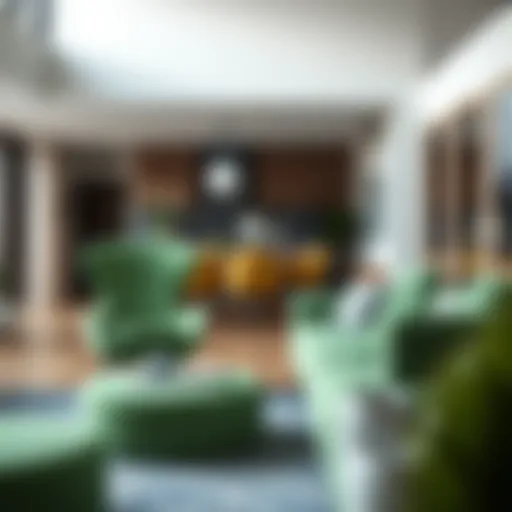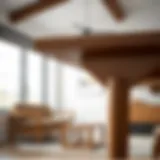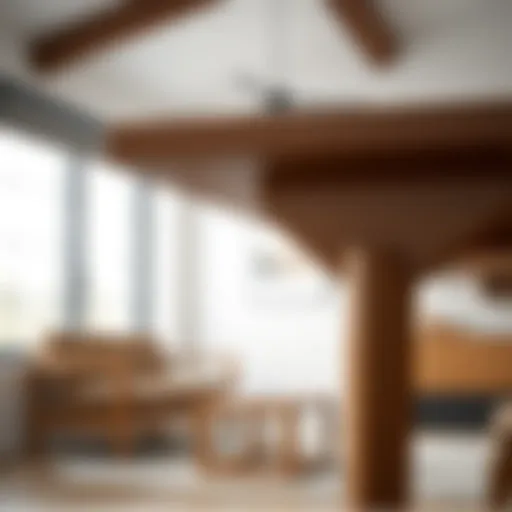Exploring Sectional Hooks in Furniture Design
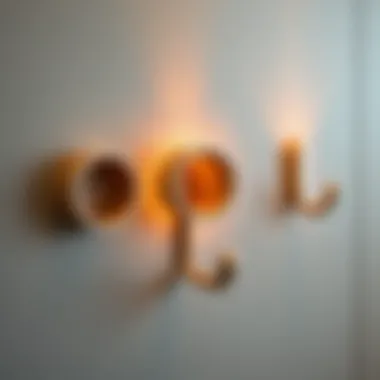
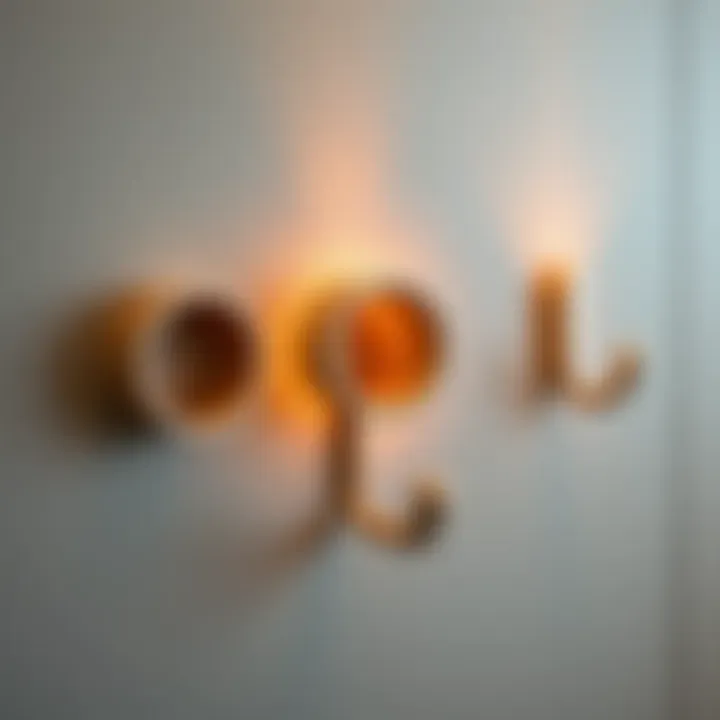
Intro
When it comes to crafting an inviting and functional living space, it’s not just about the choice of furniture but also the thoughtful details that complete the picture. One such detail that often goes unnoticed is the sectional hook. These small but significant components can dramatically alter the way a room feels while simultaneously enhancing its functionality. They serve not only as practical tools but also as aesthetic enhancers that dovetail with broader design schemes. This guide aims to unpack the various styles, functions, and considerations associated with sectional hooks in furniture design.
Furniture Design Trends
In today’s ever-evolving world of furniture design, staying up-to-date is essential. Sectional hooks are not just a practical addition; they also reflect current trends that resonate with homeowners and designers alike.
Current Styles and Aesthetics
Modern furniture design leans into organic shapes and soft lines to create a sense of tranquility. Sectional hooks often mirror this trend, coming in various forms—from sleek and minimalist to ornate and exuberantly detailed. They can be made from materials like metal, wood, or even molded plastic, allowing them to blend seamlessly into different environments.
Among popular styles, contemporary and mid-century modern designs feature hooks that emphasize clean lines, while bohemian themes might showcase more eclectic and handmade options. As you explore your space, consider how different designs can evoke various emotions. A brass hook with a vintage patina might bring a touch of nostalgia, while a high-gloss white hook can make a room feel fresh.
Color Palettes and Materials
Color and material choice play a pivotal role in the effectiveness of sectional hooks. A wooden hook stained in deep mahogany can add warmth to an otherwise cool palette. Conversely, bright colors can inject energy into a space. It’s essential to evaluate how these hooks will interact with existing furniture and decor.
Consider the following color strategies when choosing sectional hooks:
- Monochromatic Schemes: Sticking to a single color family can provide a cohesive look. Shades of gray, for example, can harmonize beautifully in a modern setting.
- Contrasting Colors: Bold hues can serve as eye-catching focal points. Think bright red hooks against a soft beige backdrop for a striking effect.
- Natural Tones: Using hooks made from materials like bamboo or reclaimed wood can introduce an organic feel to your interior, supporting a sustainable design approach.
Buying Guides
Identifying the right sectional hook requires careful consideration of factors such as functionality, style, and budget. This section aims to guide you through the essential aspects to help you make informed decisions.
Essential Considerations When Purchasing
Before rushing into your purchases, here are key factors to weigh:
- Weight Capacity: Ensure the hooks you choose can support the intended items—be it coats, bags, or decorative pieces.
- Installation Ease: Some hooks require professional installation, while others come with straightforward mounting options suitable for DIY enthusiasts.
- Durability: Look for materials that will withstand daily wear, especially in high-traffic areas like entryways.
- Style Compatibility: Select hooks that complement the overarching style of your room. This creates a cohesive look that is aesthetically pleasing.
Top Recommendations for Different Budgets
Finding quality sectional hooks doesn’t have to break the bank. Here’s a quick rundown based on a range of budgets:
- Economical Options: Search for hooks at popular retailers like IKEA or Target, where you can score stylish designs without spending a fortune.
- Mid-Range Choices: Brands like West Elm or Wayfair offer a broad selection of well-designed hooks that combine aesthetic appeal with functional versatility.
- Luxury Selections: For a more upscale feel, consider brands like Restoration Hardware, which offers exquisite craftsmanship and timeless designs, albeit at a higher price point.
Navigating through the world of sectional hooks can seem daunting, but armed with this understanding, you can make choices that enhance both form and function in your living space.
"A well-chosen sectional hook is not merely a fixture but a bridge between function and artistry in a home."
For further reading on furniture design and trends, exploring sites like Britannica or Reddit can provide valuable insights.
Understanding Sectional Hooks
When exploring the nuances of furniture design, understanding sectional hooks becomes paramount. Typical homeowners, designers, and DIY enthusiasts might wonder why such a seemingly inconspicuous element commands attention. Sectional hooks are integral in ensuring that furniture configurations not only hold together but also function seamlessly within varied spaces. They serve as versatile connectors, enabling various configurations that enhance comfort while allowing for efficient use of space. As urban living spaces shrink, the need for adaptable furniture solutions takes center stage. This leads us to appreciate the significant value that sectional hooks add.
Definition and Purpose
At its core, a sectional hook is a component designed to connect different sections of modular furniture pieces securely. It can be likened to puzzle pieces fitting together—the right hooks ensure uniformity and stability. The primary purpose of these hooks is to maintain the structural integrity of sectional couches or furniture systems. Without them, individual sections may drift apart, undermining both comfort and usability.
The necessity extends beyond mere connection; they offer flexibility. Homeowners can rearrange their settings based on needs—be it for intimate gatherings or larger parties. Furthermore, sectional hooks can facilitate easy dismantling of furniture for storage or transportation, accommodating those who frequently move their living setups.
Historical Context
The concept of sectional furniture isn't a modern inception. It harks back to the mid-20th century when innovative furniture designs started challenging conventional structures. Initially, chairs and sofas were built for singularity and permanence within a room. However, as societal dynamics shifted—like the growth of urbanization and smaller living quarters—the demand for adaptable furniture surged. Designers began crafting modular pieces, leading to the inception of sectional couches that could be interlinked using specific connectors, or sectional hooks.
"The evolution of sectional furniture reflects not only changes in style but also in lifestyle, illustrating how design can adapt to meet human needs across generations."
Today, the historical significance of sectional hooks can be evaluated through the lens of sustainability and resourcefulness. The trend leans increasingly towards furniture that serves multiple purposes, fitting smoothly in our increasingly compact and dynamic living environments. Understanding these origins adds depth to our appreciation of sectional hooks, illustrating their journey from mere connectors to key elements in modern design philosophies.
Whether you are seeking to enhance a lounging area, create an innovative office setup, or make the most of a limited space, grasping the definition and historical context of sectional hooks lays the groundwork for future exploration.
Types of Sectional Hooks
When delving into the world of sectional hooks, it’s essential to appreciate the different types available, as each brings unique benefits and challenges to the table. Understanding these types can significantly impact how one selects hooks for their furniture setup. This section will explore the materials used and design variations that are crucial in navigating the diverse landscape of sectional hooks.
Materials Used
Metal
Metal hooks stand out due to their sturdiness and load-bearing capabilities. Often crafted from materials like steel or aluminum, these hooks are designed to handle considerable weight, making them an ideal choice for modular furniture that may endure regular use. The key characteristic of metal is its durability; it doesn’t warp, crack, or dent easily, providing long-lasting support.
One unique feature of metal hooks is their resistance to extreme temperatures, which adds to their lifespan in various environments. However, while metal hooks may offer strength, they can also be prone to corrosion if not properly treated or maintained, especially in humid areas. In summary, metal hooks provide reliability and firmness, ensuring your sectional pieces stay securely joined.
Wood
Wooden hooks bring a distinct aesthetic appeal and an air of warmth to the furniture setup. Generally favored for their natural beauty and versatility, wood hooks can seamlessly blend into both traditional and contemporary designs. The key characteristic here is craftsmanship; handcrafted wooden hooks can elevate the look of a space with intricate designs and finishes.
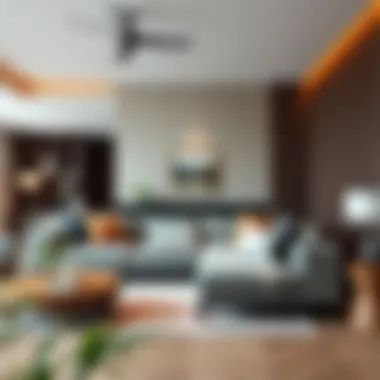
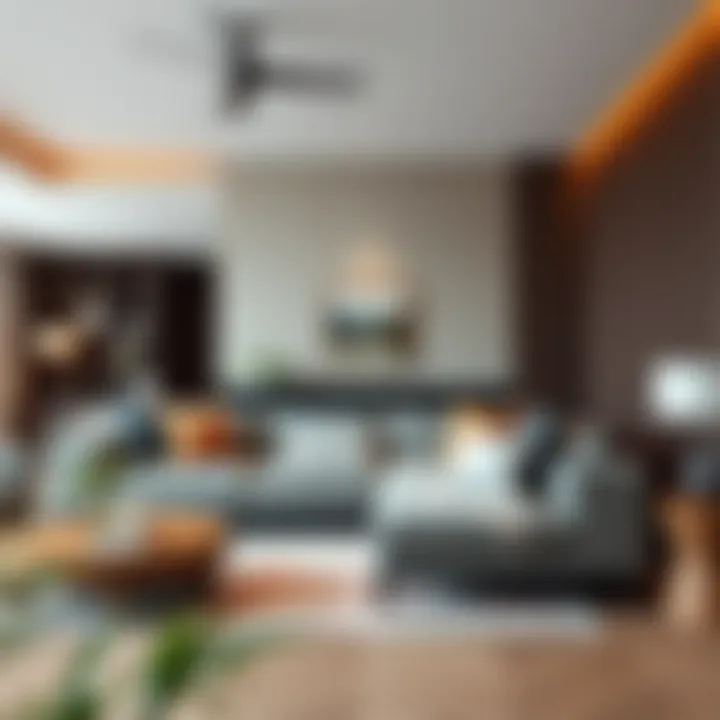
However, wood can be sensitive to moisture and temperature changes, which may lead to warping or splintering over time. Despite this, the unique grain patterns of wood can lend character to the furniture, making it a celebrated choice among designers and homeowners seeking both functionality and visual charm.
Plastic
Plastic is often perceived as a budget-friendly option. It’s lightweight, resistant to moisture, and easy to maintain. The most significant characteristic of plastic hooks is their affordability and availability in various colors and designs, making them a hit in casual or children's spaces. You’ll find that plastic hooks are incredibly versatile, allowing homeowners to customize their furniture arrangements without breaking the bank.
One unique advantage of plastic is its resistance to environmental factors, so it won’t rust like metal or rot like wood. However, it might not withstand high weights as well as its metal counterparts, which could be a concern in certain setups. All things considered, plastic hooks offer a practical solution, especially for those looking to combine functionality with cost-effectiveness.
Design Variations
Traditional Styles
Traditional styles of sectional hooks embrace timeless designs that appeal to a broad array of tastes. These hooks often showcase craftsmanship, featuring ornamental elements like carvings and intricate patterns that reflect an era of elegance. The key characteristic here is relevance; traditional hooks maintain a connection to classic design principles, making them a preferred choice for those looking to furnish spaces in a classic manner.
The unique feature of traditional styles is their ability to create a sense of history within a space. However, these designs might clash with modern aesthetics if not appropriately integrated. Choosing traditional styles can make a home feel inviting, but homeowners should consider their overall design objectives.
Modern Aesthetics
On the flip side, modern aesthetics deliver clean lines and minimalist designs, aligning with the principles of contemporary furniture design. Key characteristics of modern hooks include functionality and simplicity, making them popular among designers aiming for a clutter-free look.
One significant aspect of modern design is that it often employs innovative materials and manufacturing techniques to enhance strength while maintaining a sleek appearance. The downside, however, can be their sometimes limited capacity for decorative flair. In essence, modern aesthetics consolidate the essence of utility with contemporary style, appealing to those drawn to streamlined interiors.
Functionality of Sectional Hooks
Sectional hooks serve more than just practical purposes in furniture design; they are instrumental in enhancing both stability and flexibility in various configurations. Understanding their functionality is crucial for homeowners, designers, and DIY enthusiasts alike. This section dives into two core components of sectional hooks: support and stability, as well as flexibility in design.
Support and Stability
Load-bearing Characteristics
The load-bearing characteristics of sectional hooks are fundamental to their role in furniture design. Essentially, these hooks are engineered to manage the weight and distribution of furniture, ensuring that each segment of a sectional sofa or unit remains securely in place. One primary aspect that stands out is the ability of these hooks to distribute weight evenly, which prevents sagging or failure under pressure. This trait becomes especially significant in high-usage settings like living rooms or lounge areas.
In practical terms, a robust load-bearing design means that sectional hooks can support heavy weights without compromising safety. A common choice among manufacturers is metals such as steel, offering a solid foundation that can handle substantial loads. The unique advantage here is the longevity and reliability that these metal hooks provide.
However, it's worth noting that while metal hooks shine in durability, they can also be more challenging to install compared to lighter materials like plastic. So, owners should consider their environment and installation skills when choosing.
Structural Integrity
Structural integrity is another pivotal factor in the functionality of sectional hooks. This concept refers to the overall strength and durability of furniture pieces under varying conditions of use. A sectional hook with a high structural integrity rating means that it can withstand not just the everyday wear and tear but also the rigors of family life—where roughhousing, spills, and active use are the norm.
Materials play a critical role here; manufacturers often opt for reinforced metals or high-quality plastics that are designed to absorb shock and resist bending or breaking. The key characteristic to highlight in this section is that sectional hooks with superior structural integrity contribute to a safer environment, reducing the risk of accidents or injuries from furniture collapse.
"Structural integrity ensures that furniture remains functional and stylish over time, even amidst the hustle and bustle of daily life."
However, while strong materials provide excellent structural support, they can also raise the overall cost of furniture, which homeowners need to factor into their budget.
Flexibility in Design
Modular Configurations
One of the most appealing aspects of sectional hooks is their ability to facilitate modular configurations. This flexibility in design allows for personalized setups that can adapt as your needs change. For example, a sectional sofa equipped with modular hooks can be rearranged to fit different seating arrangements or to refresh the look of a room without needing to purchase new furniture.
The hallmark of modular configurations is that they empower the user to create spaces tailored to their lifestyle—whether it’s transforming a living area for a cozy movie night or rearranging a home office for an online meeting. The significant advantage of this versatility is that homeowners can invest in a piece of furniture that genuinely grows with them, making it a wise investment.
On the flip side, the compatibility of modular designs with various types of hooks can lead to confusion during installation or reconfiguration. Ensuring that each hook aligns with its corresponding piece is vital for maintaining functionality.
Expandability of Spaces
Expandability of spaces is a concept closely tied to the flexible nature of sectional hooks. This feature allows users to make the most out of their available space. For instance, homeowners can increase their seating capacity effortlessly while retaining a cohesive aesthetic. This could be particularly advantageous in smaller apartments where every square foot counts.
Moreover, sectional hooks enable the easy addition of components, such as chaise lounges or additional seating, without extensive renovation or investment. The key benefit here is the option to expand and customize layouts based on community needs—whether entertaining guests or accommodating growing families.
However, potential downsides may arise, such as the risk of overcrowding or disconnect between various sectional pieces. Ensuring coherence in design and style when expanding is essential to maintain the overall visual harmony of the space.
Choosing the Right Sectional Hooks
Choosing the right sectional hooks is more than just picking a style; it’s about finding the perfect match for your space and needs. The right hooks ensure stability, enhance aesthetics, and integrate seamlessly into your existing design. Not every hook fits all scenarios, and understanding your requirements is key to making a wise selection.
Assessing Space Requirements
Measuring Dimensions
Measuring dimensions is the very first step in choosing sectional hooks. You might think it’s a matter of grabbing a tape measure, but it actually requires some finesse. Good measurements allow you to determine not only if the hooks will fit but also how they will interact with furniture and other design elements. The critical characteristic here is accuracy. Ensuring your measurements are spot on helps prevent costly mistakes, turning what could have been a tight fit into a comfortable and functional space.
When you measure dimensions, consider everything from the height of your furniture to its length. Some unique features of measuring include using different angles and positions to ensure you have the best reading. However, a downside can be the variability of surfaces, where uneven floors or walls might pose a challenge. Therefore, taking the time to measure properly pays dividends in the long run. You want hooks that not only fit but also function as intended, so keep that tape measure handy.
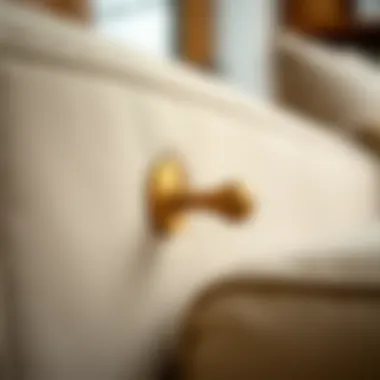
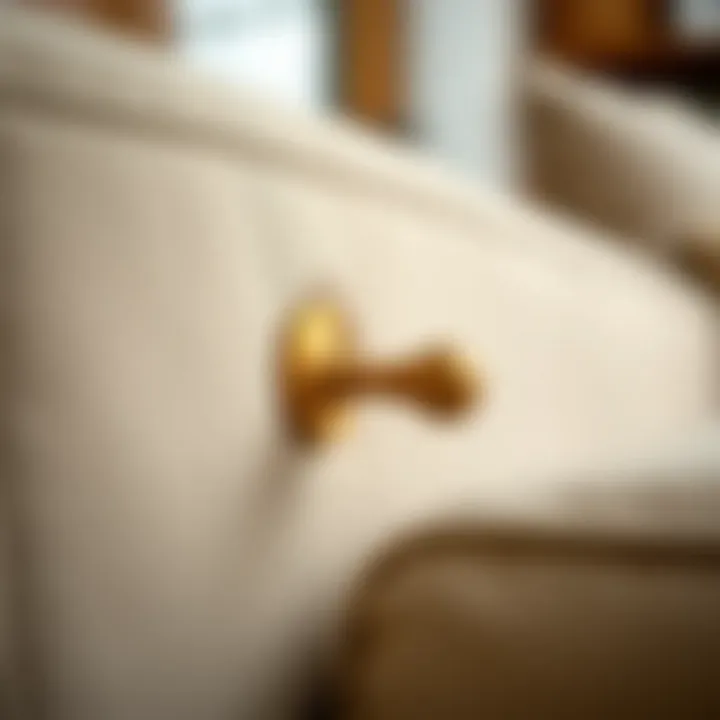
Understanding Room Layouts
Understanding room layouts is another essential element of selecting the right sectional hooks. This aspect can truly dictate how well your hooks can perform and aesthetic appeal. A well-thought-out room layout optimizes the use of space, making it a popular choice for homeowners and designers alike. Good layout understanding involves knowing where furnishings will be placed, ensuring that hooks won’t obstruct movement or flow within the area.
One unique feature of understanding layouts is visualizing how the hooks will complement or disrupt the existing arrangement. Advantages of this approach include achieving a balanced and functional space that caters to both practical use and style. On the flip side, a poorly planned layout can lead to hooks that look out of place or cumbersome. Thus, not only must you know the dimensions, but you also need to grasp the room’s flow, which enhances the overall elegance of your design.
Style Compatibility
Matching Aesthetics
Matching aesthetics plays a pivotal role in the selection process. In design, appearance matters as much as functionality. When your hooks align with the overall theme of the room, they become an extension of your decor. The key characteristic here is harmonious integration. You want hooks that won’t stick out like sore thumbs but rather blend into the landscape you've created.
A unique part of matching aesthetics is that it also extends to colors, textures, and materials. Selecting from an array of finishes—from sleek metal to warm wood—adds to the hooks' appeal. A drawback could arise from an overly trendy choice that might not stand the test of time, leading to a mismatched look as styles change. Therefore, aim for a balance between current trends and enduring design principles.
Creating A Cohesive Look
Creating a cohesive look is about cultivating unity in your space. This insightful approach contributes to the overall elegance and sophistication of the interior. Cohesiveness helps establish a focal point and can make a room feel more organized and put-together. The hallmark of a cohesive look lies in consistency; it’s beneficial for ensuring the various elements of your design communicate effectively with each other.
One unique feature of a cohesive look is how it allows for a blend of different styles, provided there is a common thread that ties everything together. This can sometimes be imagery, color palette, or even material used. While a cohesive look can be incredibly fulfilling, needing to find that perfect balance requires a discerning eye. The challenge often comes when attempting to merge disparate style elements; thus, thoughtfully considering each choice is crucial for achieving that lovely, harmonious outcome.
Installation Techniques
Understanding the installation of sectional hooks is paramount for anyone looking to enhance their living space through thoughtful design. Efficient installation not only ensures that the hooks function properly but also contributes to the overall longevity and aesthetics of the furniture. Many homeowners and DIY enthusiasts might overlook this critical phase, leading to hassles and dissatisfaction down the road. Therefore, mastering the installation techniques offers a solid foundation for a successful outcome.
Preparation Steps
Before diving into the installation process, it’s wise to do some groundwork. Preparing adequately can be the difference between a seamless setup and a frustrating ordeal.
Tools Required
When it comes to installing sectional hooks, having the right tools can’t be overstated. A level, drill, screwdriver, and measuring tape are some of the essential tools you’ll want in your arsenal. Each serves a unique function:
- A level ensures that your hooks are installed straight, avoiding lopsided situations.
- Drills simplify creating holes in the material, especially when working with tougher surfaces.
- Screwdrivers are required for securing the hooks in place, ensuring they won’t budge with regular use.
- Measuring tape is vital for capturing dimensions prior to installation, ensuring your layout is optimal.
This collection of tools presents a balanced toolkit for various tasks, making it popular among both amateurs and seasoned pros. Should you opt for electrical tools, those can add efficiency, but manual tools often provide better control and intimacy with the material.
Safety Considerations
Safety should never be an afterthought during the installation of sectional hooks. Understanding how to handle tools correctly and recognizing potential hazards is crucial. For example:
- Wear proper eye protection while drilling to prevent any debris from causing injury.
- Use gloves to protect your hands from sharp edges typical in certain materials.
- Even the flooring where you are working matters! Lay down a protective sheet to avoid scuffing your floors.
Such precautions aren’t just beneficial; they are fundamental to maintaining a safe working environment. Each of these measures alleviates risks, allowing you to focus on the job at hand.
Step-by-step Guide to Installation
Now that the preparations are set, let’s outline the process to get your sectional hooks installed efficiently and effectively:
- Measure Your Space: Start by measuring where you plan to install the hooks. Make sure they align with other pieces of furniture.
- Mark Your Points: Using a pencil, mark the exact spots for drilling. This reduces the chances of making unnecessary holes.
- Drill Holes: With a drill, carefully create holes at the marked points. If your surface is particularly tough, consider using a masonry bit.
- Insert Anchors: If you’re installing in drywall or a similar material, insert wall anchors to provide additional support.
- Attach Hooks: Using the screwdriver, secure each hook into place. Make sure they’re snug but avoid overtightening, which can cause damage.
- Double-check Alignment: Use the level to verify that the hooks are installed straight.
- Final Touches: Ensure everything is secure and tidy up any debris from the installation.
Following these steps will not only streamline the installation but also enhance the functionality of your sectional hooks, making them a valuable addition to your space.
Maintaining Sectional Hooks
Maintaining sectional hooks is not just a chore; it’s an investment into the longevity and functionality of your furniture. A well-maintained hook not only supports the weight of your sectional but also preserves the aesthetic appeal of your space. When you think about it, these hooks sometimes play an unsung role, almost like the glue that holds together your carefully curated living areas.
Regular maintenance can prevent minor issues from turning into major headaches, ensuring that your sectional furniture remains secure and looks great for years to come.
Cleaning Tips
Material-specific Cleaning
Keeping your sectional hooks clean varies depending on what material they are made of. For instance, metal hooks can be polished with specific cleaning agents that remove rust and prevent corrosion. This not only maintains their strength but also enhances visual appeal. Plastic hooks, on the other hand, can usually be cleaned simply with warm soapy water and a soft cloth. The beauty of this type is its easy maintenance and resistance to stains. Whether it's wood or metal, aligning your cleaning method to the material helps preserve their integrity.
- Key Characteristics: Metal hooks often offer durability, while wooden ones add warmth to the decor. Plastic hooks provide hassle-free upkeep.
- Advantages/Disadvantages: Metal can rust over time if not cared for, while wood may need special oils to prevent scratches. Plastic gets discolored from lightweight cleaners that are too harsh.
Preventative Maintenance
Taking time for preventative maintenance can save you a headache down the road. Regularly check for any signs of wear, like looseness or discoloration on hooks. Tightening screws and bolts at periodic intervals can prevent larger issues from arising.
The key feature of preventative maintenance is that it usually doesn’t require extensive tools or expenses. Small efforts lead to huge benefits, like maintain structure and aesthetics over long periods. Save your furniture from early wear.
- Beneficial Characteristics: Simplicity in maintaining the hooks with basic tools allows for fast action when problems arise.
- Unique Features: Preventative measures can often be done by anyone, eliminating the need for professionals – a boon for DIY enthusiasts!
Longevity Considerations
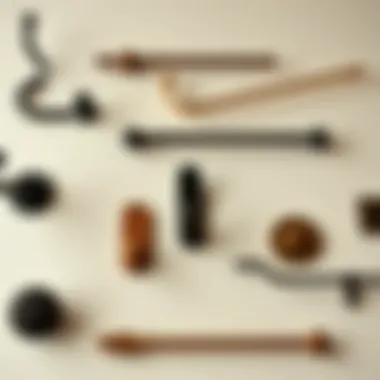
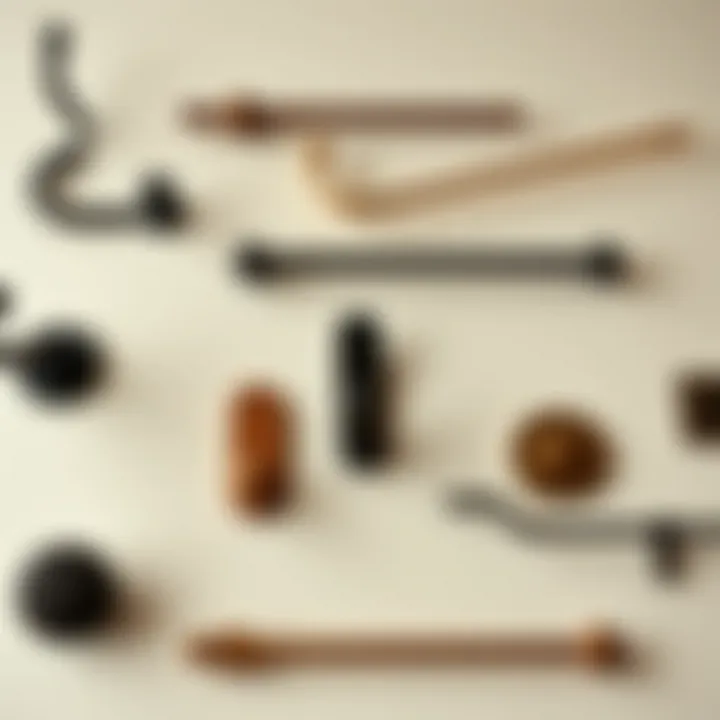
Identifying Wear and Tear
Identifying wear and tear is crucial for maintaining sectional hooks. It’s like checking the oil in your car; neglect it, and you could be facing dire consequences. Regular inspections should include checking for any visual damage like cracks, rust, or even paint that’s flaking off. Incorporating a habit of checks could save you money in replacement costs.
- Key Characteristic: The most notable aspect to monitor is the hook’s ability to bear weight.
- Advantages/Disadvantages: Early identification allows for timely repairs but failure to notice issues could result in catastrophic collapses, ruining both furniture and space.
Replacement Options
When hooks are beyond repair, understanding the replacement options becomes crucial. Usually, companies that produce sectional furniture offer compatible replacements. However, opting for customization can get your design aesthetics back on track.
A big advantage of knowing your replacement options is the freedom it gives you to experiment. You can explore different designs that might enhance your overall theme or color palette. This adaptability shines when you want to inject freshness into an otherwise stagnant design.
- Key Characteristics: Availability of replacements is typically easy to find thanks to the diversity of furniture markets.
- Advantages/Disadvantages: Custom replacements can often come at a higher cost, while standard ones are usually cost-efficient but might lack in design.
In the end, maintaining sectional hooks isn’t simply about keeping things tidy. It’s about ensuring that your entire living environment stays functional and aesthetically pleasing. With a little diligence, the practical and stylish elements of your sectional can flourish.
Incorporating Sectional Hooks into Design
In the world of furniture design, sectional hooks play a crucial role in marrying functionality with aesthetics. These systems not only provide essential support for various elements but also contribute significantly to the overall visual appeal of a space. When you think about how to integrate sectional hooks effectively, it’s important to consider aspects like layout, use, and style. Each of these factors can dictate how well your design holds up over time, both in terms of usability and appearance.
Enhancing Functional Spaces
Living Areas
Living areas are often the heart of the home, serving as gathering spaces for family and friends. This makes the choice of sectional hooks all the more important. When selected wisely, sectional hooks can enhance the practicality and comfort of living spaces. One key characteristic of living areas is their fluid layout, which encourages movement and interaction. Sectional hooks help in optimizing the space by enabling modular arrangements—so you can easily rearrange furniture to fit different occasions or needs.
For example, a sectional sofa with hooks can allow you to add or remove seating as needed, facilitating greater versatility. However, care must be taken that these hooks complement the overall design theme; a mismatch can detract from the space's inviting essence.
Incorporating sectional hooks brings significant advantages such as ease of use and adaptability. Yet, if not properly maintained or installed, they can be a source of instability, risking the integrity of your furniture setup. Keeping a close eye on wear and tear is essential.
Offices
In the realm of offices, sectional hooks can take on a different role, catering to productivity and organization. A well-organized workspace can enhance focus and efficiency. The main feature of office setups is often their need for streamlined function; sectional hooks can play into that by offering places to secure items such as cords, bags, or even office supplies.
The benefit here is clear: sectional hooks increase organization, reducing clutter and helping your workspace feel more serene and conducive to concentration. On the flip side, if the hooks are poorly positioned or lack sufficient strength, they can become an eyesore and even compromise your workspace's professional appearance. Again, regular checks for structural integrity will keep the office environment safe and functional.
Aesthetic Contributions
Creating Visual Interest
Incorporating sectional hooks isn’t just about function; it’s also a key player in elevating the aesthetics of a room. Creating visual interest is all about drawing the eye and sparking engagement with a space. A compelling characteristic of this concept is how hooks can serve as design accents without overwhelming the primary decor. For instance, sleek metal hooks on a wooden accent wall can provide just the right touch of sophistication while remaining functional.
This integration allows for creative arrangements that visually break up the design—think staggered hooks at different heights, adding a dynamic element to your walls. Maintaining a balance between aesthetics and functionality is crucial; over-decorating can lead to clutter. The right choice can transform a dull wall into a focal point that captivates and intrigues.
Focal Points in Design
In a well-curated room, focal points are essential for guiding the viewer’s attention. Sectional hooks can aid in establishing these focal points, especially when they are uniquely designed or arranged. The key feature here is their ability to anchor an entire theme or style—like industrial or rustic uses of specially designed hooks that truly stand out.
When you think of hooks in this context, you're not just looking at them as practical items, but rather as components that contribute to the narrative of the space. The downside? If not placed thoughtfully, they can detract rather than enhance, serving as mere distractions. Therefore, careful planning and integration are essential, allowing designers to maintain the visual flow without disrupting the aesthetic coherence of the environment.
In summation, incorporating sectional hooks into design is a multifaceted approach requiring thoughtfulness on various fronts. From enhancing functionality in both living areas and offices, to boosting aesthetic appeal through visual interest and focal points, the thoughtful use of sectional hooks can lead to dynamic and engaging spaces.
Future Trends in Sectional Hooks
As the landscape of furniture design continues to evolve, understanding the future trends in sectional hooks is vital for both homeowners and designers alike. The integration of modern practices not only enhances aesthetic appeal but also improves functionality and sustainability. Being aware of these trends helps you stay ahead of the curve, ensuring that your options reflect the latest in both style and utility.
Sustainable Practices
Sustainable practices in the world of sectional hooks focus on eco-friendly materials and responsible manufacturing processes. Today's consumers are more conscientious about the environmental impact of their purchases. For sectional hooks, this can mean using recycled materials or sustainably sourced wood, ensuring that every piece contributes positively to the planet.
- Key Characteristics:
These hooks are often crafted from materials like reclaimed wood or recycled metals, which not only reduce waste but also bring a unique character to the piece. - Benefits of Sustainability:
By choosing sustainable sectional hooks, you not only enhance your home’s décor but also play a part in a global initiative to reduce waste. This approach aligns with the growing demand for greener choices in all aspects of life, reflecting a commitment to the environment that resonates with many consumers today.
Technological Innovations
Technological innovations have hugely influenced the design and functionality of sectional hooks, with two primary areas standing out: smart furniture integration and adaptive designs.
Smart Furniture Integration
Smart furniture integration represents a fusion of technology with traditional furniture design. This form of integration allows sectional hooks to connect with smart home systems, creating enhanced functionality.
- Key Characteristics:
Smart hooks can adjust their placement based on user preferences, or even feature sensors that monitor weight distribution. This means your sectional can be both stylish and responsive, adapting to your lifestyle. - Advantages:
The ability to integrate with digital systems offers convenience, allowing users to rearrange furniture with ease based on changing needs. This modern twist on traditional design exemplifies how incorporating technology can elevate everyday experiences. However, the reliance on tech may mean a higher initial investment and upkeep, which some users may not find appealing.
Adaptive Designs
Adaptive designs focus on versatility and functionality, allowing sectional hooks to serve multiple purposes. These hooks are designed to change form or function based on the situation, making them particularly appealing in smaller or multi-purpose spaces.
- Key Characteristics:
An adaptive hook might transform from a simple support to a decorative piece or even a storage solution. This flexibility ensures that as your living conditions evolve, your furniture can adapt without needing replacements. - Advantages and Disadvantages:
The major advantage of adaptive designs is their ability to save space and increase utility. However, they may sometimes sacrifice aesthetic appeal for functionality, presenting a challenge when balancing style with practicality in design.
"In a world where trends shift faster than the blink of an eye, being aware of the future functionalities of sectional hooks ensures that you remain at the forefront of contemporary design."
Ultimately, the trends in sectional hooks point toward a future where functionality, sustainability, and technology coexist seamlessly. Keeping an eye on these developments can help anyone, from designers to DIY enthusiasts, make informed choices that resonate with both personal style and modern sensibilities.

